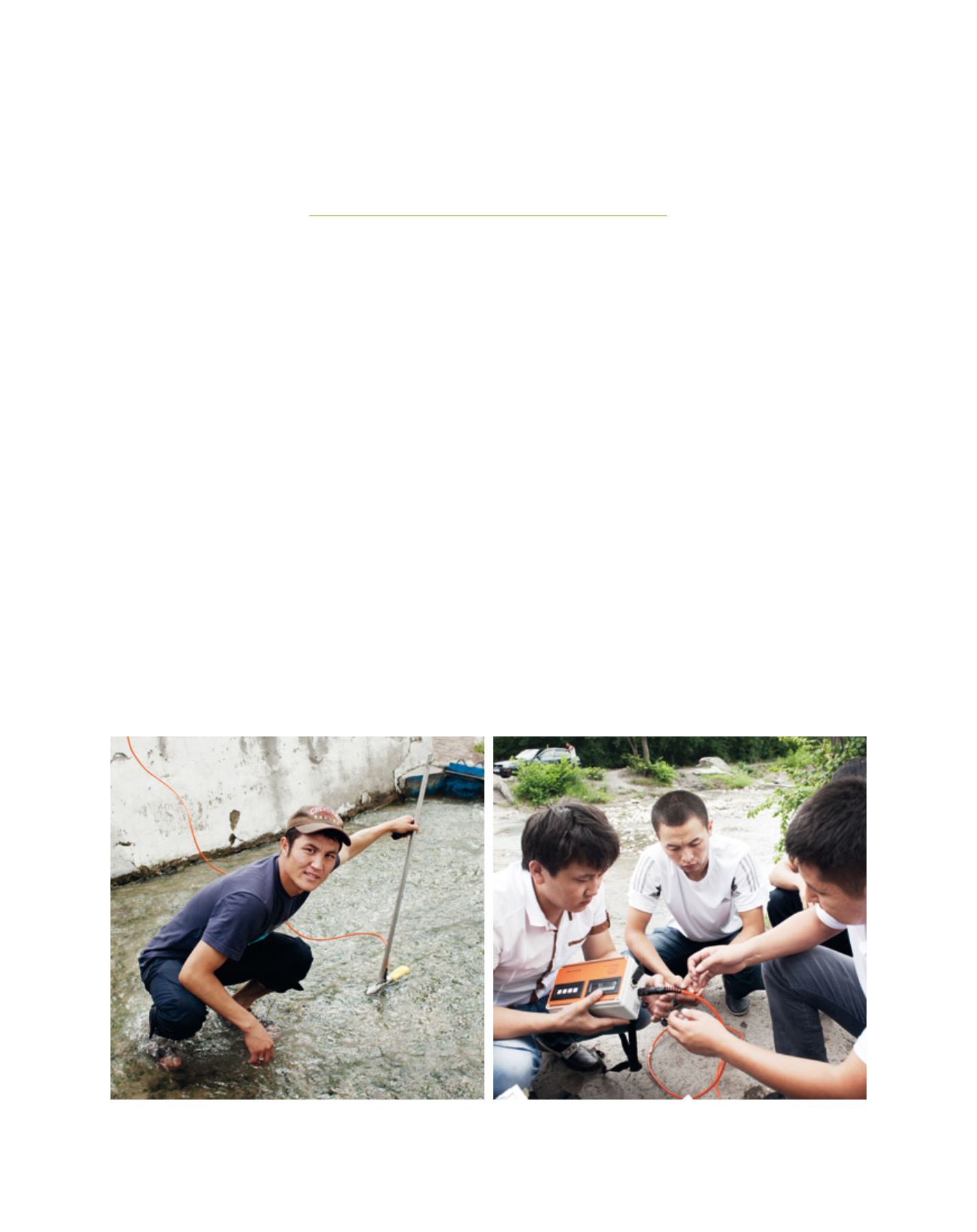

[
] 53
Cooperation on small rivers
can make a difference
Jeff Smith for the International Water Management Institute
A
long two glacier-fed tributaries leading to the decimated
Aral Sea in central Asia, river flow, water distribution
and other data are shared across national borders. As
part of the cooperative effort, a river management official in
Kyrgyzstan used a radio phone provided by the project to warn
his downstream counterparts in Tajikstan of heavy rains and
help avert a potential devastating flash flood and mudslide.
Sometimes water specialists cross borders or meet in neutral
zones to discuss water management issues. When borders are
tight, they keep in touch by telephone or Skype.
The Colombo, Sri Lanka-based International Water Management
Institute (IWMI)
1
has worked to foster transboundary coopera-
tion on these two small rivers – the Khojabakirgansai shared by
Kyrgyzstan and Tajikistan, and the Shakhimardansai shared by
Kyrgyzstan and Uzbekistan.
2
“If your neighbour is in peace then
you are in peace,” A’zamjon Rahmatullaev, the head of an Uzbek
basin irrigation authority in the area, said at a workshop last year in
characterizing the importance of cooperation.
IWMI, one of 15 Consultative Group on International
Agricultural Research (CGIAR) research centres
3
supported by
a consortium of governments, private foundations
and other organizations, generally takes a basin-wide
approach. But in this case, the organization believes
that potential conflicts in this volatile region can be
eased through cooperation on small rivers, with the
hope that cooperation can spread to broader areas.
Local communities in essence learn to manage the
water supply and infrastructure themselves, and main-
tain it over the long term.
Joint river management planning has resulted in
better communication, more reliable and timely water
distribution, improved maintenance and a process
for resolving disputes. IWMI helped the groups
systematize what previously was an ad hoc process.
“Everything is transparent,” says Mark Giordano,
IWMI theme leader, water and society. “The system is
working better overall.”
IWMI researcher Kai Wegerich says it is difficult to
draw a direct link between cooperation and livelihoods.
While water efficiency may be improving, IWMI’s
research has shown that livelihoods in the basin are
T
ransboundary
W
ater
M
anagement
Good data underpins successful water cooperation. Students in water management at the Kyrgyz National Agrarian University are the first generation to learn
modern techniques of water data collection
Image: Ikuru Kawajima/IWMI


















